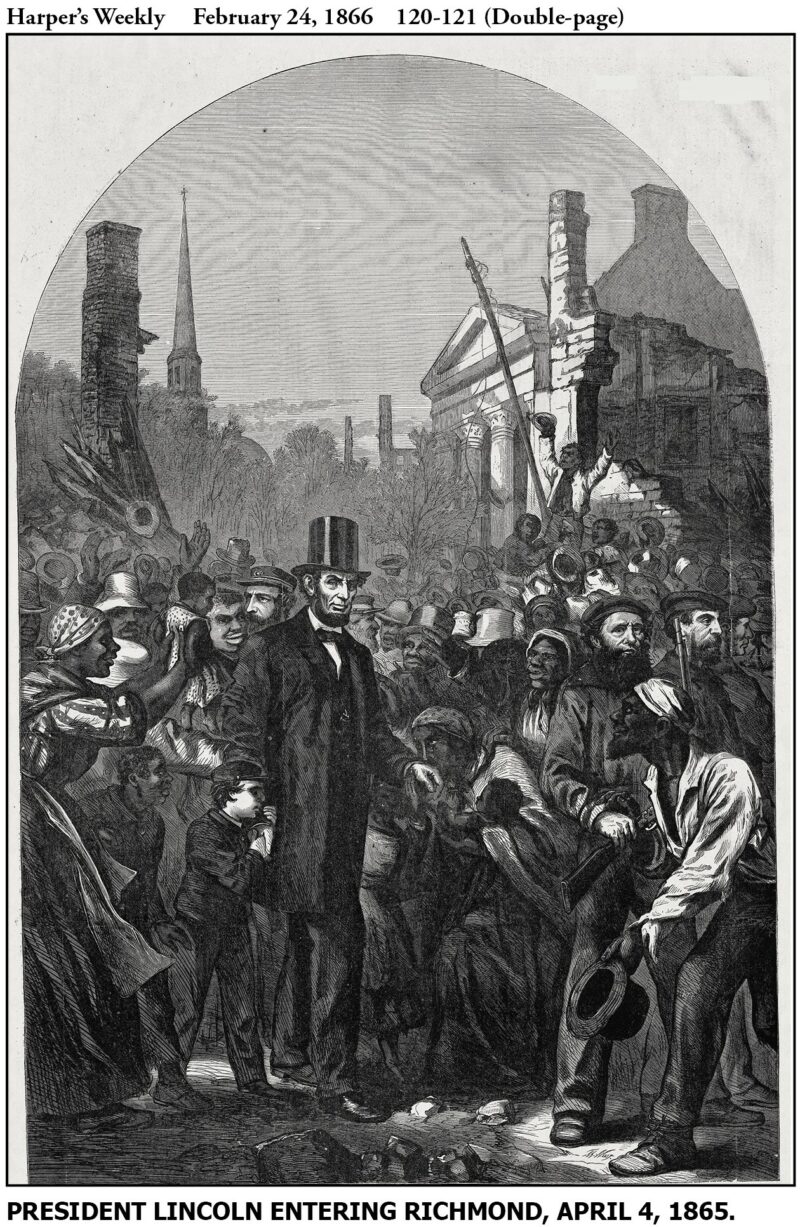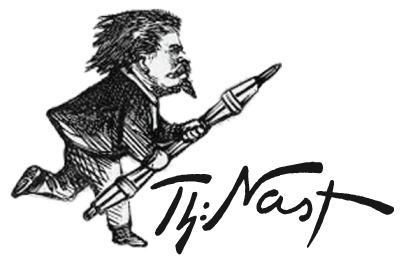
Harper’s Weekly – February 24, 1866
April 2, 1865 saw the successful end of the ten-month siege of Petersburg, the gateway to Richmond, as General Ulysses Grant completed his encirclement of the city. Robert E. Lee evacuated Petersburg late that night.
While in church on that same disastrous Sunday morning, Jefferson Davis received an urgent message from Lee, to get out of Richmond immediately. The city formally surrendered about four hours after Petersburg did so.
The next day, Lincoln joined Grant in Petersburg. Learning that Davis had fled, the Commander-in-Chief asked Admiral David Porter to take him up the James River to the Confederate Capital.
According to Admiral Porter, the carriage expected to convey Lincoln and his party never showed up. Accordingly, they walked, accompanied by twelve of the ship’s crew with bayonets fixed on their rifles. Nast’s picture showed Lincoln holding his son’s hand — it was Tad’s twelfth birthday — with Admiral Porter just behind him and the naval guard out of sight. Eventually a four-horse carriage and a military escort caught up with them and brought them through the smoldering center of the Confederate capitol to Jeff Davis’s residence. Lincoln sat at his rival’s desk in a very personal victory celebration.
Events moves so quickly that no contemporary artist or photographer was able to record Lincoln’s visit. A year later, in honoring what would have been Lincoln’s fifty-seventh birthday, Nast drew an illustration of President Lincoln Entering Richmond, April 4, 1865. An accompanying editorial made it clear that Nast’s visual tribute was timed to coincide with historian George Bancroft’s memorial address to a joint session of Congress delivered on February 12. For once, he had adequate time to prepare, so his research, creative imagination and careful execution made this the best example of “history painting” that he ever drew for Harper’s.
This was the first of only three occasions where Nast portrayed Lincoln as a flesh-and-blood person rather than as an emblematic figure. Nast captured the unique magic of the moment as eyewitness reporter Charles Coffin described it: “President Lincoln walked in silence acknowledging the salutes of officers and soldiers and of the citizens, black and white! It was the man of the people among the people. It was the great deliverer meeting the delivered . . . such wild indescribable ecstatic joy I never witnessed.”
